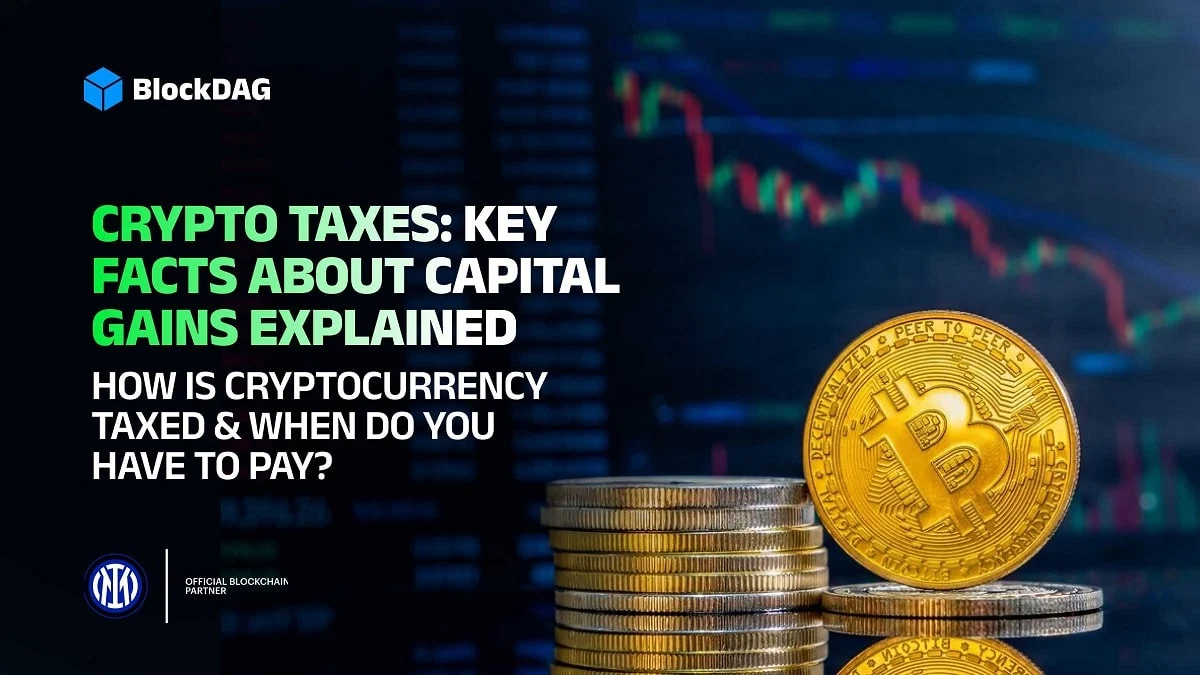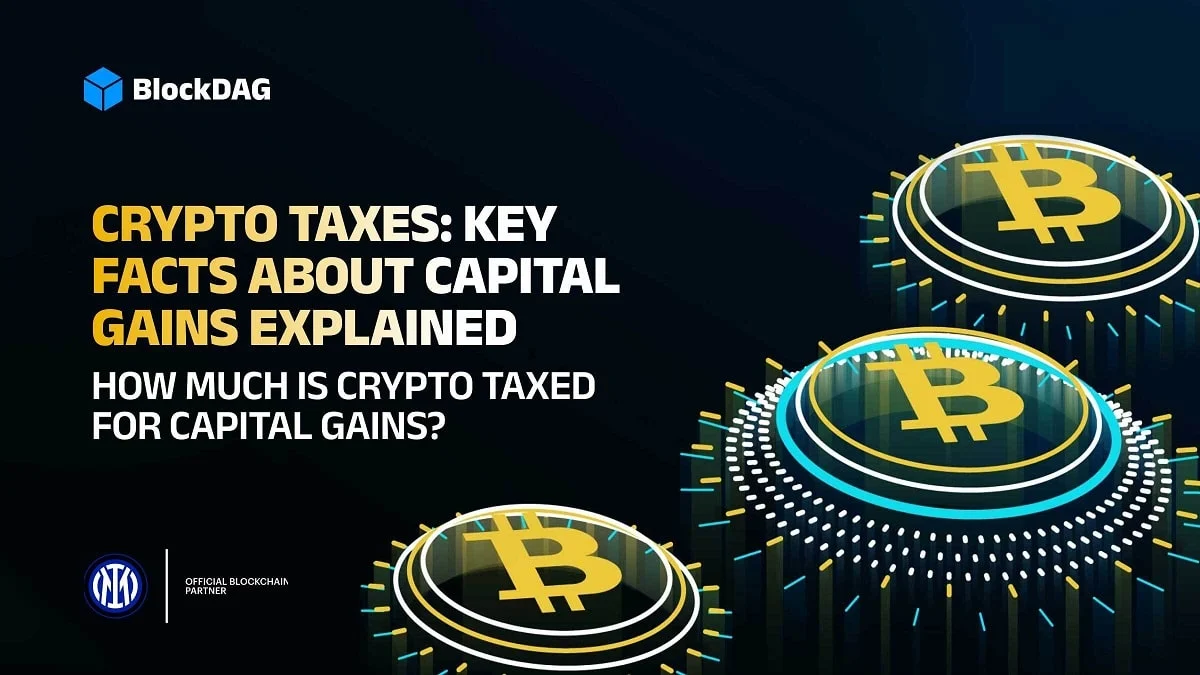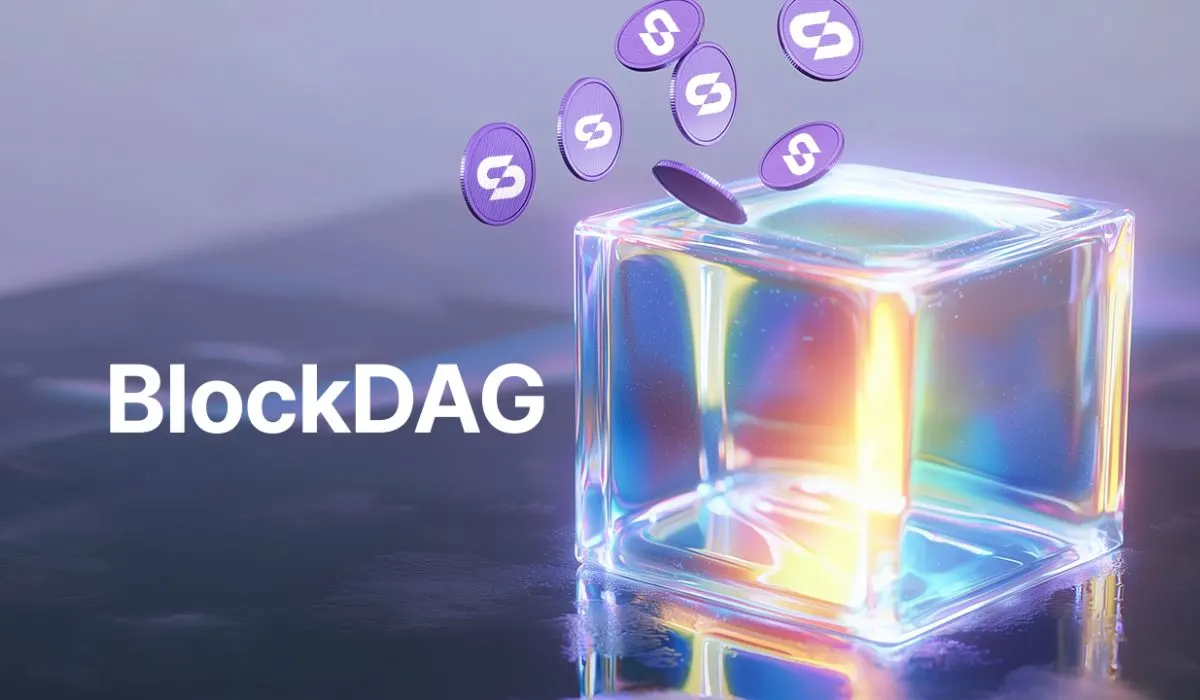How is Cryptocurrency Taxed & When Do You Have To Pay?
How Much Is Crypto Taxed For Capital Gains?
Taxes On Short-Term Crypto Gains
Taxes On Long-Term Capital Gains
How BlockDAG Could Change the Way Crypto Transactions Are Taxed?
The big cryptocurrencies like Bitcoin (BTC) have seen a record surge in price by the end of 2024 due to various key factors. Many investors were tempted to sell their crypto holdings, however, there are some crypto tax liabilities to take care of before doing that.
You are obliged to pay the taxes on crypto gains if you decide to sell your cryptocurrencies. In simple terms, it is exactly the same as paying taxes when selling your assets and stocks. In this blog post, we will discuss everything you need to know about crypto taxes for capital gains.
How is Cryptocurrency Taxed & When Do You Have To Pay?

You have to pay taxes on the gains you made through cryptocurrency once you sell them. The rate and amount of crypto taxes depend on how much you gain. The tax rate is based on your income and how long you have owned the crypto. Short-term gains (owing it for a year or less) are taxed between 10% and 37%. Long-term crypto gains (owning it for more than a year) are taxed between 0% and 20%.
Selling crypto at a loss or switching wallets usually doesn’t trigger taxes. However, staking and trading one crypto for another do. Keep in mind the following points:
- What is the total period you owned the crypto for? If you hold for more than a year and then sell, you would typically pay less in taxes than if you decided to sell it before a year.
- What is your annual income? Generally, higher incomes pay higher tax rates.
You don’t have to pay taxes when holding but when you actually sell your cryptocurrency, whether you trade it for another cryptocurrency or cash. For example, if you bought $1000 of crypto, which is now worth $2000, and you still own it, you won’t owe any taxes.
How Much Is Crypto Taxed For Capital Gains?

It entirely depends on how much profit you make throughout the year and the total time period you stick with your holdings before selling them. Rates for crypto taxes can vary and are divided into two parts, short-term and long-term crypto gains. Let’s see how much is crypto taxed for both short and long-term holdings.
Taxes On Short-Term Crypto Gains
If you decide to sell cryptocurrency after holding it for one 12 months or less, you have to pay capital gains tax on crypto for short-term holdings. This tax is relevantly more than the capital gains tax on long-term holdings.
Regardless of the amount gained, all profits from short-term capital gains become part of your annual taxable income. You then calculate your taxes based on this total amount. Short-term gains are taxed like regular income. This means you will pay different tax rates depending on how much you earn.
For example, if you file as an individual, you have to pay 10% on the first $11,000 of your income. 12% to be paid on the next portion of your income, which is up to $44,725. The following tax bracket will give a clear idea of your standing based on your current status. If you have sold your crypto coins in 2024, you have to pay the following taxes in 2025;
Crypto Tax Rates for Singles
- 10% if you earned up to $11,600
- 12% on income between $11,601 – $47,150
- 22% from $47,151 – $100,525
- 24% up to $191,950, and it keeps rising from there
Crypto Tax Rates For Married Filing Jointly
- 10% if your combined income is up to $23,200
- 12% for $23,201 – $94,300
- 22% for $94,301 – $201,050, and so on
Crypto Tax Rates For Head of Household
- 10%: Up to $16,550
- 12%: From $16,551 – $63,100
- 22%: Up to $100,500, and continues upward
Crypto Tax Rates for Married But Filing Separately
- 10%: Up to $11,600
- 12% – 24%: $11,601 - $$191,950
- 35% hits earlier: at $365,600, not $609K like single filers
Taxes On Long-Term Capital Gains
If you keep your cryptocurrency for more than a year and decide to sell it after more than 12 months, you have to pay taxes based on long-term capital gains. This tax has different rates compared to regular income tax. Even though you don’t pay taxes on long-term gains as regular income, your annual taxable income helps determine your tax bracket for these gains.
Based on your income and filing status, you usually pay 0%, 15%, or 20% on long-term crypto gains. Let’s see the levels of taxations of the crypto you have to pay in 2025 if you have already sold your crypto tokens in 2024.
Crypto Tax Rates for Singles
- 0% if your total income is $47,025 or less
- 15% if you make between $47,026 and $518,900
- 20% only kicks in if you earn over $518,900
Crypto Tax Rates for Married Filing Jointly
- 0% if your combined income is $94,050 or less
- 15% on income from $94,051 to $583,750
- 20% if you're making more than $583,750
Crypto Tax Rates for Married but Filing Separately
- 0% up to $47,025
- 15% from $47,026 to $291,850
- 20% once your income exceeds $291,850
Crypto Tax Rates for the Head of Household
- 0% for income up to $63,000
- 15% between $63,001 and $551,350
- 20% if you earn more than $551,350
How BlockDAG Could Change the Way Crypto Transactions Are Taxed?

BlockDAG (Block Directed Acyclic Graph) is a new type of technology for cryptocurrencies that could make transactions faster than traditional blockchains. It can process many transactions at the same time, which may help reduce network congestion.
This efficiency could also make it easier for tax authorities to track and calculate taxes on crypto gains. As a result, investors might find it simpler to file their taxes.
BlockDAG is becoming popular because of its strong mining planning using crypto profit calculator and successful presale. It has already raised over $212 million and sold more than 19.1 billion BDAG coins. The price of the coins has increased from $0.001 in Batch 1 to $0.0248 in Batch 27, which is a 2,380% gain.
The latest version of the Beta Testnet, V1, has just launched. It is x2 times faster in comparison to the previous version and includes a no-code tool for creating tokens and NFTs. Participants are eligible for $60,000 in rewards, which makes it more than just a test platform.
